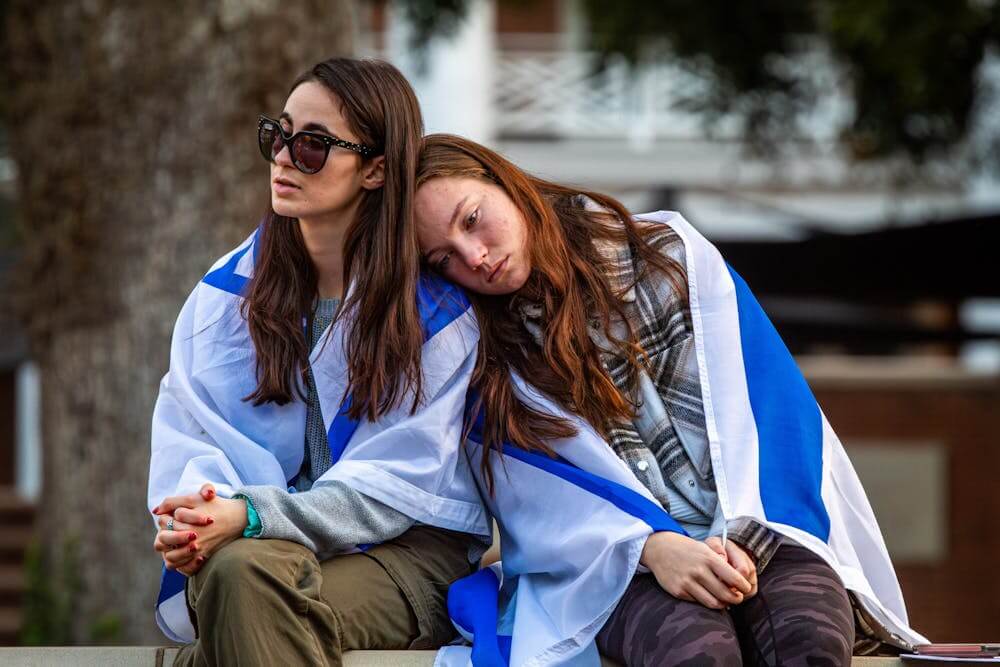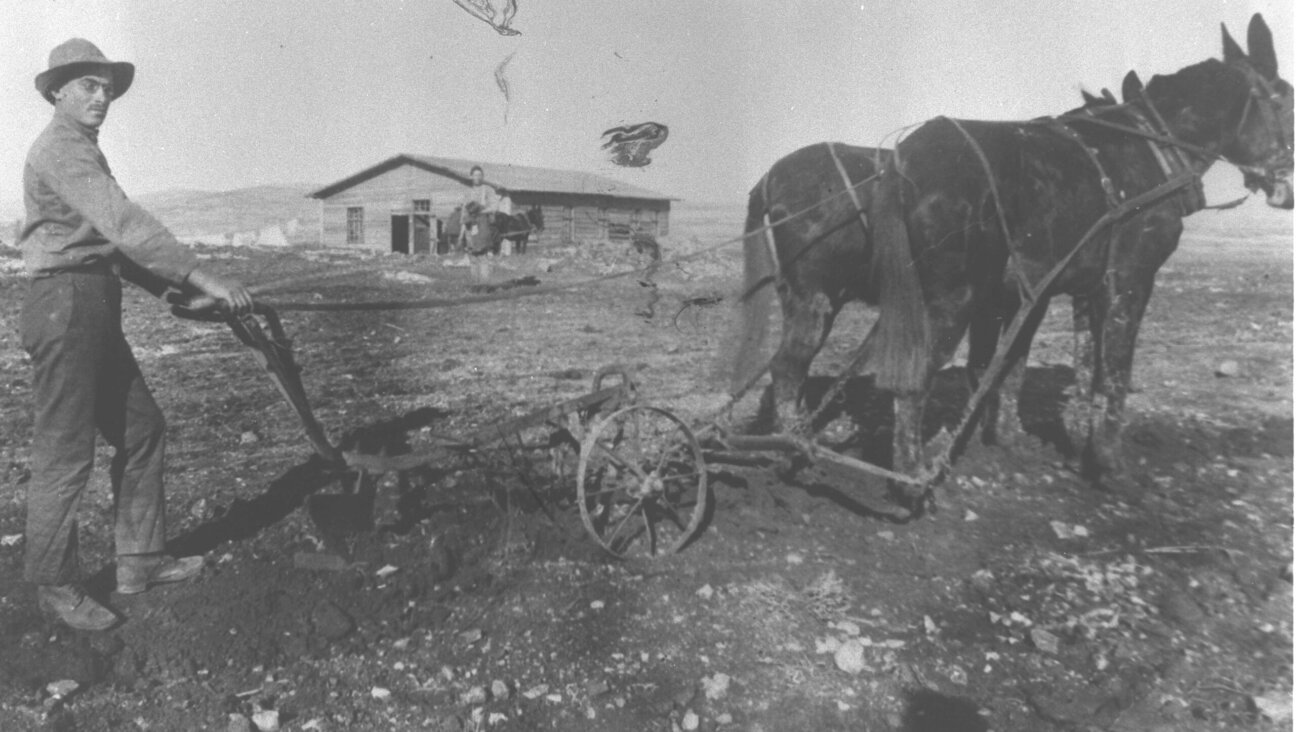Have Judaica Will Travel — Through Dixie

Moving Lesson: Educator Rachel Jarman Myers carries a trove of Judaica that tells the story of Jews in the Deep South. Image by courtesy of rachel jarman myers
Sign up for Forwarding the News, our essential morning briefing with trusted, nonpartisan news and analysis, curated by senior writer Benyamin Cohen.
When Rachel Jarman Myers, a Jewish educator, works with children in Jackson, Miss., she typically asks the students if they know any Jewish people. Sometimes, one child raises a hand. But when she specifies that the person cannot be Myers herself, the child’s hand almost always goes back down.
The Jewish population in Mississippi has always been small. It peaked in 1927 with just 6,420 Jews. Today, there are only 1,500 Jewish people in an overall population of more than 2.9 million, according to the Goldring/Woldenberg Institute of Southern Jewish Life.
Myers, museum and special projects coordinator at the ISJL, aims to expand awareness of the region’s Jewish history with the Traveling Trunk, a hands-on curriculum she developed to teach non-Jewish children in secular public and private schools about Jewish culture and immigration. The program uses primary documents such as ship manifests, census records and business records from Jewish store owners — as well as artifacts and games — to tell the story of Jewish life in the South. It has also garnered Myers recognition from the Mississippi Historical Records Advisory Board, which presented her with an award this year for her use of archival material to bring history to life.
Traveling trunks are used often as outreach tools by history museums; Myers was inspired by a similar program run by the Mississippi Department of Archives and History. The items in her trunk, however, all come from the ISJL’s collection, and the activities and lesson plans that accompany them are carefully curated to introduce non-Jewish children to Jewish life and traditions. Much of the Judaica included in the trunk — such as a menorah, a shofar and a miniature Torah — was donated when area congregations closed their doors. Allowing students to hold these items and consider why Jewish immigrants would have brought them with them to the United States, Myers says, is “a great way to continue the legacy of these congregations that are no longer represented in their communities.”
One of her favorite lessons revolves around more than 100 letters sent to Bernheimer and Sons, a store in Port Gibson, Miss., by the store’s suppliers in 1900. Students team up to determine which manufacturer wrote each letter and where it originated from. They then track those locations on a map and learn how the goods traveled by train or boat to Port Gibson. Reading and understanding these documents, Myers says, is “a different sensation and accomplishment than just reading about it in a book.” The lesson ends with the children deciding what inventory they would stock if they had a store of their own.
Other Traveling Trunk lessons have been a hit with area teachers. Margaret Snider, who teaches 4th–6th- grade gifted education at McWillie Elementary School in Jackson, says her class was so fond of a “masking-taped rectangle that we marked off on our floor to illustrate the size of space allotted to the immigrants on their ships” that they convinced her to leave it in place for six months.
At East Amory Elementary in Amory, Miss., teacher Marcia Moore used reproductions of period clothes from the trunk as well as a game based on the travels of early Jewish peddlers in her lessons about anti-Jewish discrimination. She used the curriculum to impart an anti-bullying message, reminding her mostly white and Christian class not to look down on those with different backgrounds or abilities.
While the trunk, with its photographs, maps and educational board games, makes its way to various schools and teachers, Myers sometimes presents a shorter version of the curriculum herself. In those sessions she often finds children are unfamiliar with the topics the Traveling Trunk addresses. She asks them to consider what would compel immigrants to journey to America, a discussion Myers finds especially interesting to have with African-American students, whose ancestors were brought here involuntarily. But while exposing kids to the history of local Jewish life is important, she says, it is also “just fun.” Among the historical details that intrigue the students, she lists period hairstyles and the use of typewriters.
Myers, who grew up in Hamden, Conn., didn’t always plan to work in Jewish education or to live in Jackson. At Brandeis, she majored in religious studies — a longtime interest of hers, though she describes her personal brand of Judaism as a love of “food and festivals” — and dressed up as the university’s mascot, an owl version of Supreme Court Justice Oliver Wendell Holmes, at sporting events. She jokes that the experience qualified her for an internship at Boston’s New England Aquarium, where she wore a shark costume. It was while leading tours at the Aquarium that Myers discovered she enjoyed informal education.
Myers, now 27, joined the institute as an intern during her junior year of college, and came back after graduation as an education fellow, moving into her current role in 2010. Because the ISJL’s physical museum closed in 2012, much of Myers’s work involves outreach. With Dr. Stuart Rockoff, director of the institute’s history department, she creates itineraries and provides resources for Jewish tour groups visiting cities from Memphis to New Orleans. She also works on exhibits in partnership with other organizations, such as Tougaloo College, a historically African-American university. Additionally, Myers blogs at MyJewishLearning.com, something the ISJL staff began doing to “tell the South’s story,” as she puts it, on wider Jewish platforms.
Beyond her job, Myers has reached out to Jackson itself. She helped bring Figment, a multi-city, participatory arts festival, to the city. She sits on the board and serves as membership chair of Jackson 2000, a not-for-profit organization dedicated to improving race relations and other social and economic issues. She also performs locally as a singer and dancer.
Jackson is where Myers met her husband, Chris Myers, an architect originally from Batesville, Miss. Chris is not Jewish; his father’s first Jewish acquaintance was the owner of the town’s lone Jewish-owened store — an echo of the Traveling Trunk curriculum and an experience which Myers says is common for Mississippians. Jewish culture was new to her husband when they met, she says, but he liked it. And, she adds, “He likes me!”
The couple host community events in their backyard, some of which have Jewish themes, like a Hanukkah latke competition with four deep fryers going on the back porch. (Chris may not have been acquainted with latkes before, but he assured his wife that, having grown up in the South, he understood fried foods.)
This type of educational social interaction is an everyday opportunity for Myers. Each new person she meets means having the “Jewish conversation,” she says, but most are “interested and excited” to learn more. And her gatherings, including one Passover where 13 of her 30 guests had never been to a Seder before, allow her to “share my favorite parts of my faith.”
Myers, who once assumed she’d eventually move back to the East Coast, now feels at home as a “big fish in a small pond” in Mississippi. “Being Jewish in the South is a great experience,” she says.
Johnna Kaplan writes about travel, history and Jewish issues. She lives in New London, Conn., and blogs at www.thesizeofconnecticut.com













